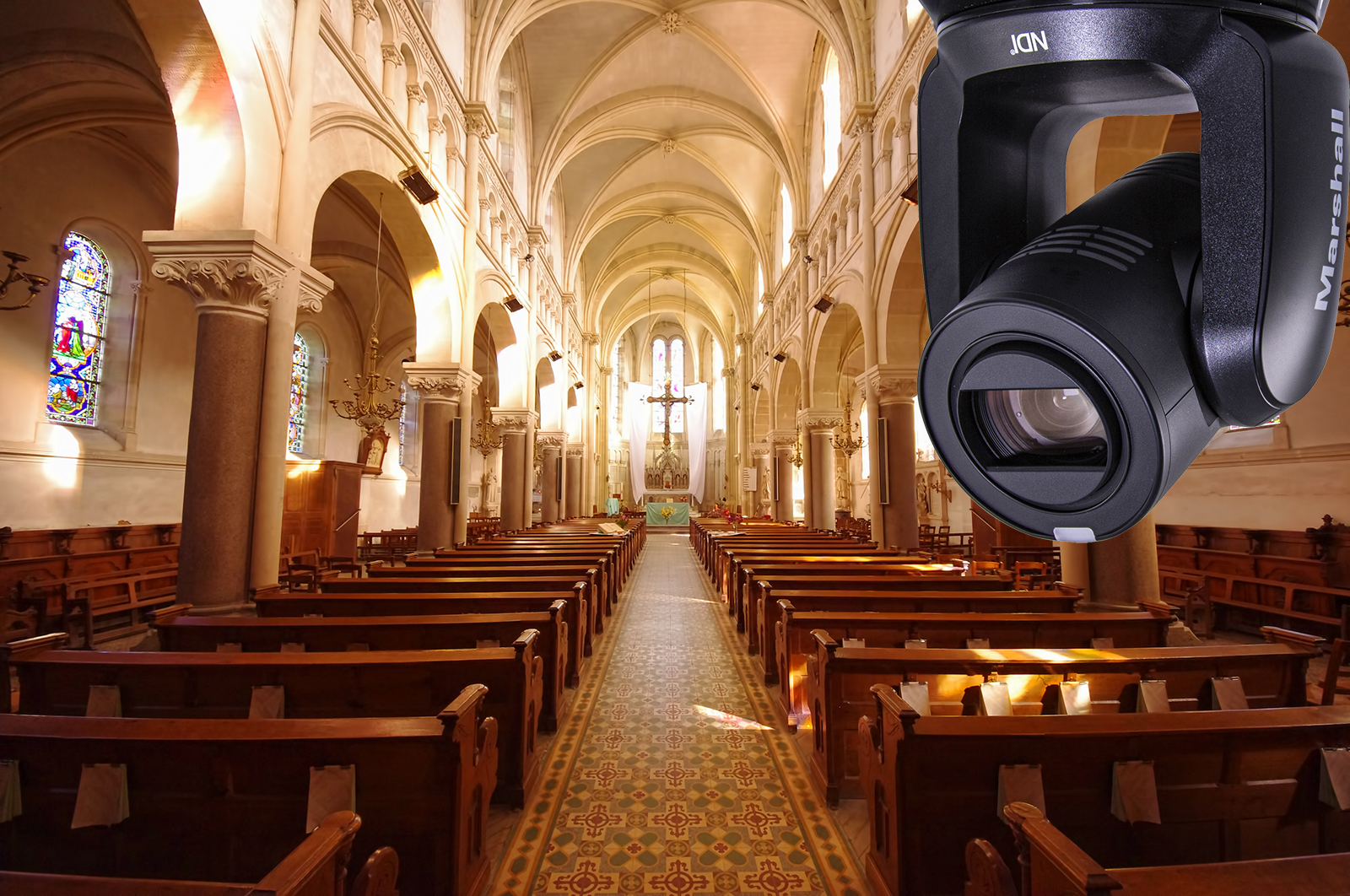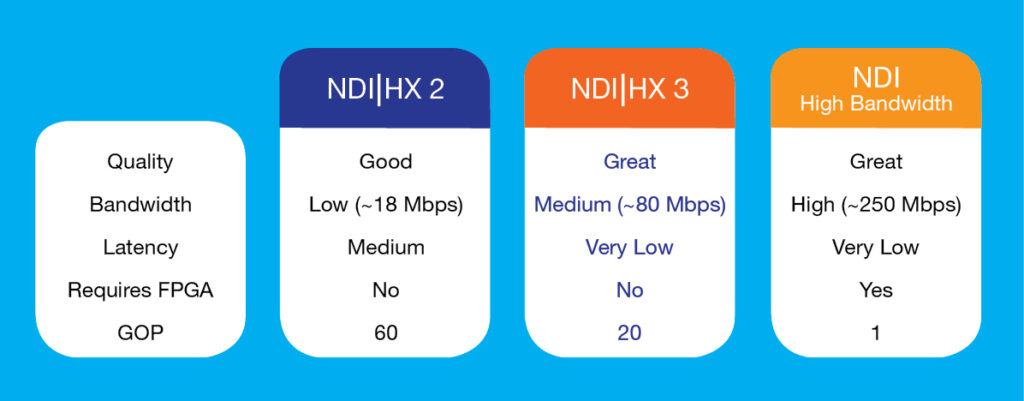
How-to Choose the Right NDI® Codec for your Church Streaming Services
AV technology is often immersed in acronyms and technical terms that can make choosing the right equipment for streaming services a daunting task. It can be overwhelming to those that seek to acquire the best alternatives to streaming its services and events and expand its faith-based message to a larger audience over the internet. Using NDI is an effective way for houses of worship to stream its content, but what is NDI and how can a worship leader choose the best workflow and protocol for their congregation?
NDI stands for Network Device Interface and is designed to augment more traditional workflows (SDI and HDMI) and simplify internet video streaming over a variety of bandwidth environments while maintaining video quality at the lowest latency possible. Since its inception, NDI has grown into a mature ecosystem of hardware and software encompassing all aspects of production, broadcast, streaming and AV over IP.
Using an NDI (IP) camera source also opens the possibility to directly stream live or use software or cloud-based production codecs. Whether you use Dacast, YouTube Live, Facebook Live, ChurchStreaming, Vimeo, or any other streaming service, an NDI-based workflow can help streamline your operations.
Why adopt NDI instead of SDI or HDMI in Your Church?
NDI uses standard IT networking technology already in use such as internet routers, switches and Cat (RJ45) ethernet cable to transport 4K/UHD/HD video signals. Another advantage of using NDI is that a church facility only needs one ethernet cable for power (PoE), video, audio, control and tally, which makes installing cameras a breeze. NDI also provides solutions to incorporate NDI solutions with existing SDI and HDMI formats. To See the entire line of Marshall NDI cameras CLICK HERE.
Can NDI share the same network as our current IT connections?
NDI can operate on the same network used for internet connections. However, there is a limit to how much data a network can support. Choosing a managed highly efficient ethernet switch, such as NETGEAR’s ProAV Series, with power-over-ethernet (PoE) can help simplify setup, and also manage and operate your NDI video sources. If you are looking to manage multiple video streams, then you might require a dedicated 1GbE network or even a 10GbE infrastructure investment.
Can I control cameras over NDI networks?
Cameras that have NDI capabilities can be controlled over NDI networks. There are free downloadable NDI|Tools that offer easy Mac iOS or PC software programs, such as Studio Monitor, to discover IP sources easily. Many of these software options also enable you to preview and control camera movement and adjust a range of settings, including the ability to handle creative lighting during services and events. This can be as simple as connecting a smartphone or tablet and downloading the software, and users can then control cameras wirelessly as operators move around the facility. There is also a variety of hardware control options, such as the Marshall VS-PTC-IP PTZ controller, that can plug directly into the switch (one-cable) and operate all PTZ cameras on the network.
What’s the Difference Between NDI|HX, NDI|HX3, and High Bandwidth?
While NDI|HX provides high-quality video using efficient encoding algorithms, full NDI or High-Bandwidth NDI uses the full bandwidth to produce 125mb/s HD and 250mb/s UltraHD video streams. With the arrival of HX3, users requiring higher video quality have a new more efficient option: NDI|HX3, which produces visually lossless video, with ultra-low latency. In picture quality and delay, it is now arguably indistinguishable latency from NDI High Bandwidth.
Can I use NDI over my WiFi network?
NDI|HX uses H.264 compression codecs, which is used by most tablet, smartphone, media players, and smart TV products on the market. NDI|HX also supports HEVC encoding delivering high-quality video compression at lower bandwidths. This also allows for delivery over wireless (WiFi) networks. This frees up limitation of cables and provides flexibility within the house of worship environment. Encoding to HEVC reduces the bandwidth required (compared with H.264) by up-to 50 percent, meaning that even 4K NDI|HX signals can be sent over standard wireless connections.
I like comparison charts, is there a graph to explain differences of NDI versions?

Marshall offers a variety of options in NDI|HX, NDI|HX3 and full-NDI. Standard NDI|HX cameras include the CV355-30X-NDI, CV420-30X-NDI, CV630-NDI, and CV730-NDI, which are available now. New NDI|HX3 capable cameras include the CV730-ND3, CV630-ND3, and CV420Ne, releasing early next year. High Bandwidth (or full-NDI) include the new high performance CV730-BHN available in December. This camera has the ability to utilize full-NDI, NDI|HX3, NDI|HX2 and standard IP (HEVC), all in one camera, giving a house of worship many options for today, and into the future. To See the entire line of Marshall NDI cameras CLICK HERE.